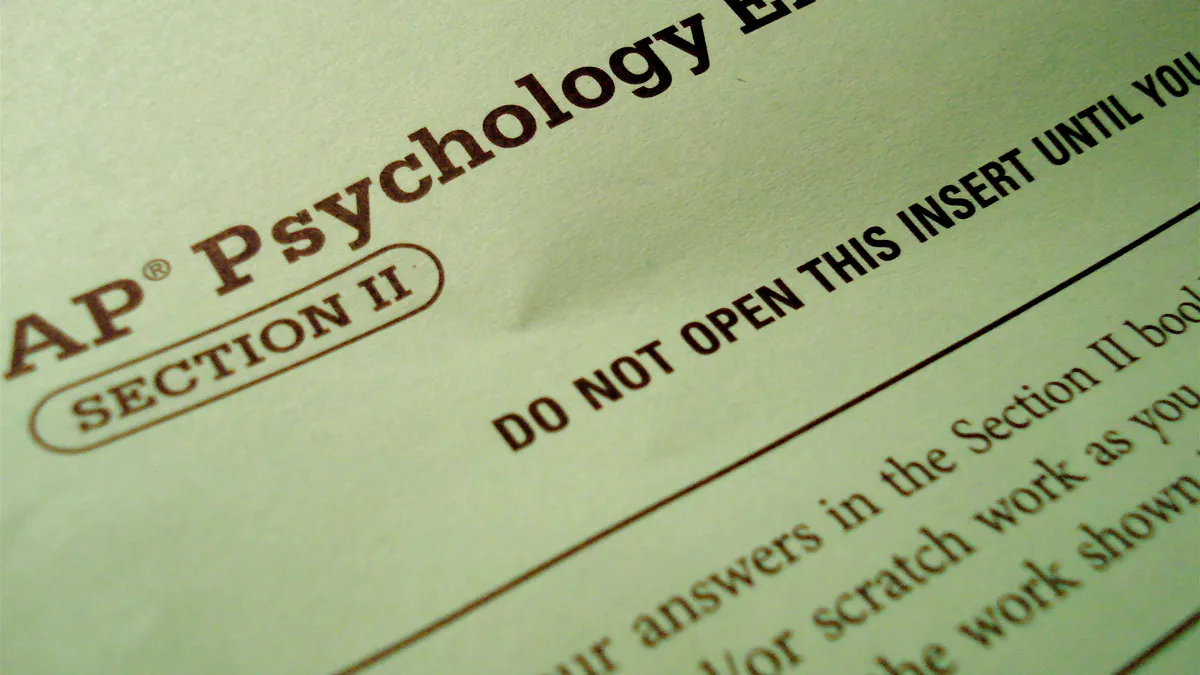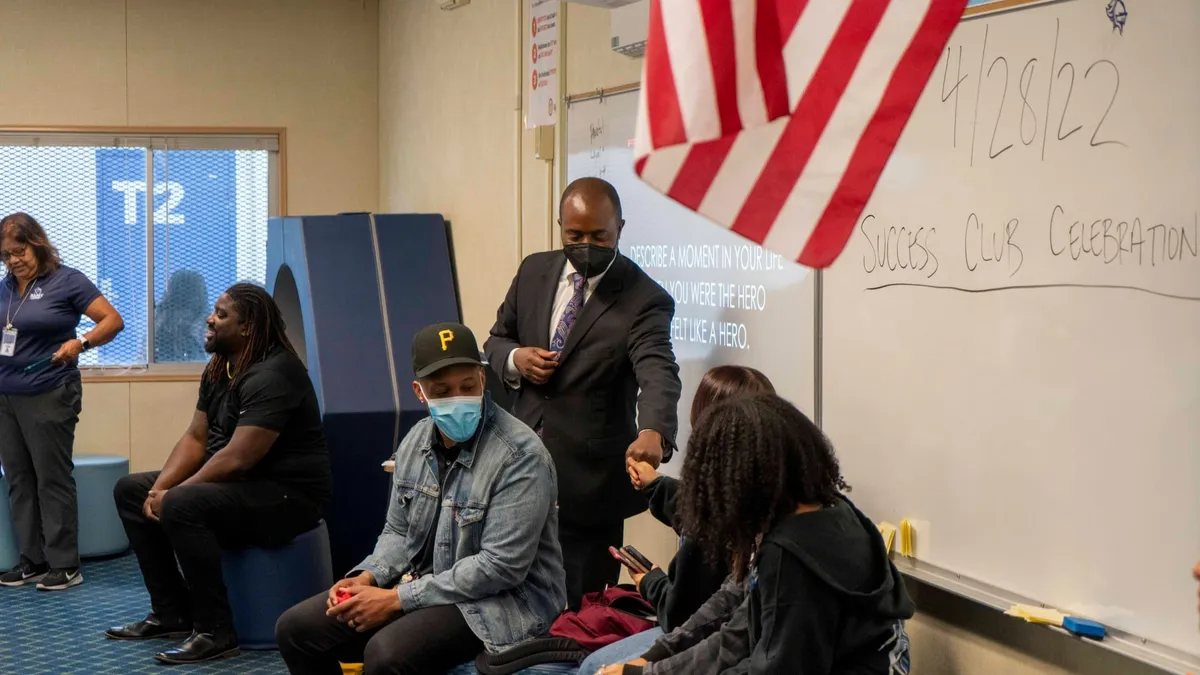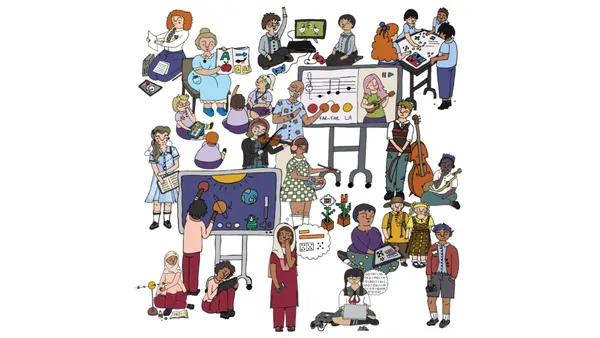Michael McQuillan taught history for 19 years in Brooklyn, New York, high schools. At Leaders High School, he taught a police-community relations field course.
Martin Luther King Jr.’s belief that every individual has an innate capacity for leadership was a cornerstone of the civil rights movement. His leadership style — under which thousands of others were able to display moral heroism and rise to greatness — shows how powerful a facilitator can be and is one that can be adopted by education leaders.
King understood that the civil rights movement’s success would depend on continuous mass mobilization, beyond the bus boycott in Montgomery, the Edmund Pettus Bridge march in Selma, or any one demonstration. At times, he engaged in a game of cost accounting, tallying the risks and rewards of his actions.
But school principals — pressured to raise test scores or other measurables — may, to their detriment, rush through issues and create a revolving door of leadership. According to one report, “three years in, 60% of principals in New York Mayor Bill de Blasio’s signature School Renewal program were replaced, in contrast to the 35% citywide total.”
King also never relied on celebrity for his own self-esteem. Instead, he “shared space,” expanding his influence by empowering others to emerge as leaders — this ensured that the civil rights movement would outlive him.
Later achievements by Andrew Young as ambassador to the United Nations and mayor of Atlanta, Rev. Jesse Jackson as presidential candidate and Rainbow Coalition founder and Georgia Congressman John Lewis testify to King’s legacy.
Building strong organizations through dialogue
The theme of empowerment still resonates today. “There can no longer be rigid hierarchy, nor isolation of leadership," said Barbara Levy Kipper, chair of the Charles Levy Company, a Chicago-based book distributor. "The people closest to a given situation know how to handle it best. The more voices that are heard, the stronger the organization."
Most leaders are given a honeymoon period during which time an individual can get a grasp on his or her organization. A leader who holds one-on-one consultations with key staff members like department chiefs, leaders of associations, or those with “devil’s advocate” or “elder” roles will gain support for plans or programs. During these consultations, meaningful lines of questioning can elicit valuable information about overall attitudes and more specific things, such as sources of fulfillment or frustration and the capacity to overcome obstacles.
These exchanges can also illuminate potential concerns, acquaint the leader with potential allies and help identify “unsung heroes and heroines” who may relish opportunities to prove themselves ready for higher-level positions.
A leader who provides those opportunities both facilitates growth and improves daily operations. Informal contracts can be a valuable way to place staff members in positions that are challenging, yet offer the opportunity for success.
For example, a school principal can encourage teachers to create or attend conference workshops, chair committees or consider course innovations, and then acknowledge their achievements through announcements at faculty or parent meetings, letters to the superintendent or releases to local media.
The dialogue also becomes an early warning system that pinpoints potential adversaries and divisive issues. A leader who addresses this resistance demonstrates respect for divergent views and, in turn, earns respect. Those who allow their own views to be challenged in this way will gain insights toward making better decisions.
The late Sen. Robert Kennedy asserted that the future "will belong to those who see that wisdom can only emerge from the clash of contending views." That was King’s stance with his aides and how Abraham Lincoln staffed his cabinet.
Interactions like these encourage open dialogue and create a positive culture. Beyond listening to a staff member’s stories, a leader can practice articulating a vision during these sessions. The informal setting gives room for a leader to refine the words, experiment with delivery styles, gauge reactions, disarm critics and gain confidence.
Such successful exchanges readies a principal for “higher stakes” group meetings.
This dialogue initiative, if conducted on a frequent basis that reaches all levels of the organization, evolves into an ongoing communication network that will then grow with use as the leader’s “eyes and ears.” It will preserve connections with individuals and informal groupings, as a framework for proactive policy development, crisis intervention and the constant flow of day-to-day matters to be decided throughout the institution. A communication system also aids in assessing and reinforcing a broad-based empowerment program.
Principals should expand the network to include district offices, local bankers, police captains, union representatives, elected officials, community boards and foundations. What former New York Department of Education Chancellor Joseph Fernandez said still often applies: “What they want is often the status quo. And if you’re the status quo, you can survive a long time by not doing anything.”
It can help to have decided in advance what your leadership will stand for. What programs or projects will be your priorities? What values will you uphold? When I began serving on the borough president’s staff, a friend said that “no matter how long you stay, you won’t get them to do all 10 things you believe in. But even if it’s just four, that will be two more than most people get, and you will make a difference.”
Gaining trust
Early decisions on priorities can preserve important goals against the reactive pressures of leadership.
Change is threatening — it breeds anxieties among folks who felt alienated from the prior regime yet worry about what lies ahead. A leader who can balance reassurance with innovation can gain trust in the organization and community.
Empathy, in my view, is a vital ingredient in leadership. But I fear that our culture has yet to transcend a stereotypic regard for toughness and a regal-bearing among its leaders. Perhaps the public mind mistakes toughness for strength, but a leader who seems arbitrary, inflexible or unyielding, except on matters of moral principle, will sow the seeds of his or her demise.
On the other hand, a leader who is strong enough to understand his or her own strengths and weaknesses, enjoys building and training a creative staff, delegates authority and infuses public expressions of appreciation through all levels of the organization will have power — and a firm foundation of credibility and trust for making tough decisions.




















